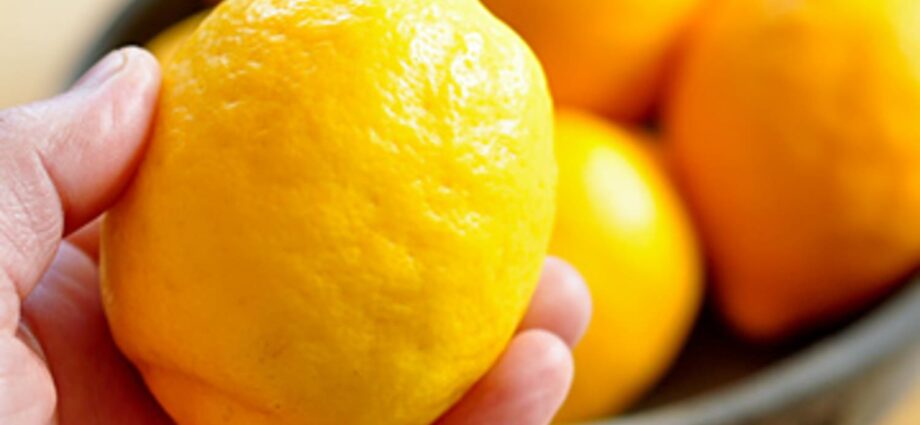How to choose the right lemon?
Visually, lemons can differ in shape, smoothness of the peel, the saturation of its shade, as well as the size of the fruit. The taste of lemons is almost always the same, but due to improper storage, fruits with rather bitter taste properties can be found.
When choosing a lemon, you can ignore the skin color and size. It is much more important to determine the ripeness and quality of the fruit. This is done visually. It is not necessary to cut the lemon to determine its quality.
In shape, lemons can be round, oval, with elongated stalks or tips, and also have elongated fruits. The variety is due to the varieties of these citrus fruits. Almost all varieties are the same to taste.
Broadly speaking, lemons can be divided into two categories based on the thickness of the peel.:
- with thin skin;
- with a thick skin.
It is difficult to say that some lemons can be bought and others not. Both of these types are consumed in different ways. For example, thick-skinned lemons are ideal for soups or drinks, while thin-skinned lemons are best bought when juice is important.
How to choose a lemon
Sometimes lemons can have a bitter taste. This quality is not characteristic of a good ripe fruit. There can be two reasons for bitterness: improper storage or antibiotic treatment to extend shelf life. The natural cause of the bitter taste can be an unripe condition of the fetus. In any case, if the lemon is bitter, then you can get rid of this quality with boiling water. The fruit is dipped in boiling water for a few seconds, and then consumed as planned.
What lemons are worth buying:
- the surface of the lemon should have a uniform color without dark spots or dots;
- the lemon peel should be even without depressions, wrinkles or faded areas;
- the scent of lemon should be felt through the skin and be characteristic of this type of citrus;
- if you lightly squeeze the lemon in your hand, then its peel should be elastic (too hard lemon will be unripe);
- ripe lemon can only be yellow;
- if you attach a napkin to a lemon, then traces of essential oils should remain on its surface (if there are no traces, this does not mean that the fruit is of poor quality, but the release of oil indicates the absence of chemical treatment);
- Lemons with thin and smooth skin are distinguished by higher rates of beneficial properties (such fruits are usually removed during the first harvest of the tree).
What lemons are not recommended to buy:
- if the peel of the lemon is not even, then when the fruit is cut, it will also turn out to be thick (there will be too much peel, but not enough pulp);
- if black dots or small specks appear on the surface of the lemon, then the fruit was not stored correctly and, most likely, was hypothermic (the taste of such a lemon will differ in bitterness);
- dark and flabby spots on the peel indicate the beginning of the decay process (the taste of lemon will be spoiled, and the amount of juice will be reduced several times);
- lemons with too shiny surfaces have been treated with chemicals or paraffin;
- if the lemon does not smell, then it was grown using a lot of chemicals;
- if, when squeezing a lemon in your hand, its peel is soft and not springy, then the fruit is overripe;
- greenish or green spots on the skin of the lemon are a sign of its immaturity;
- sluggish lemon peel can be the result of improper storage, overripe or rotting of the fruit from the inside (while there may be no brown spots or dots on the peel surface);
- vitamins in lemons with a thick skin are less than in fruits with a thin skin (beneficial properties accumulate in the white layer between the pulp and the skin).
Unripe lemons can be bought… This option is acceptable, for example, if you do not plan to eat citrus fruits immediately after purchasing them. At room temperature, the fruits ripen rather quickly.










